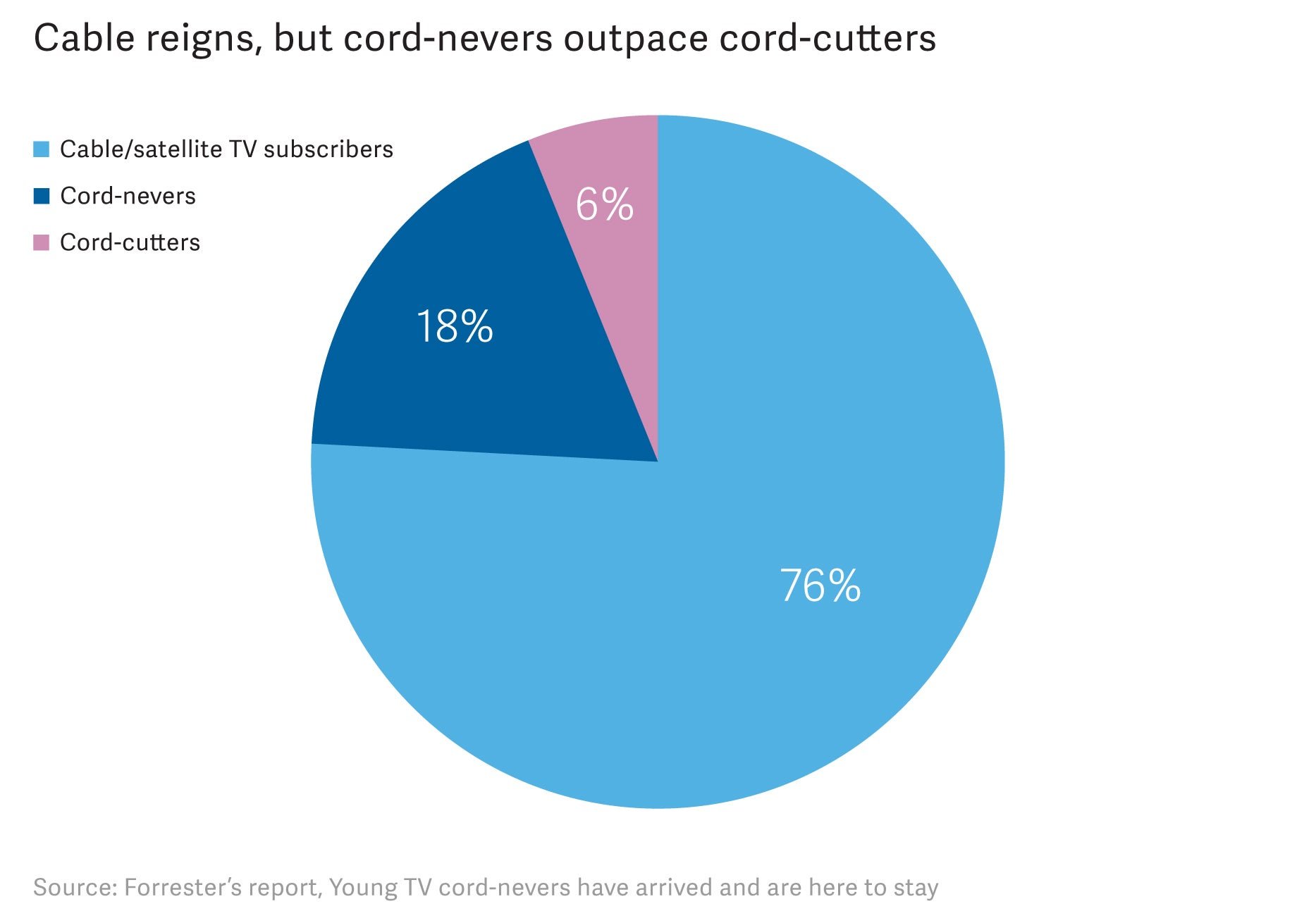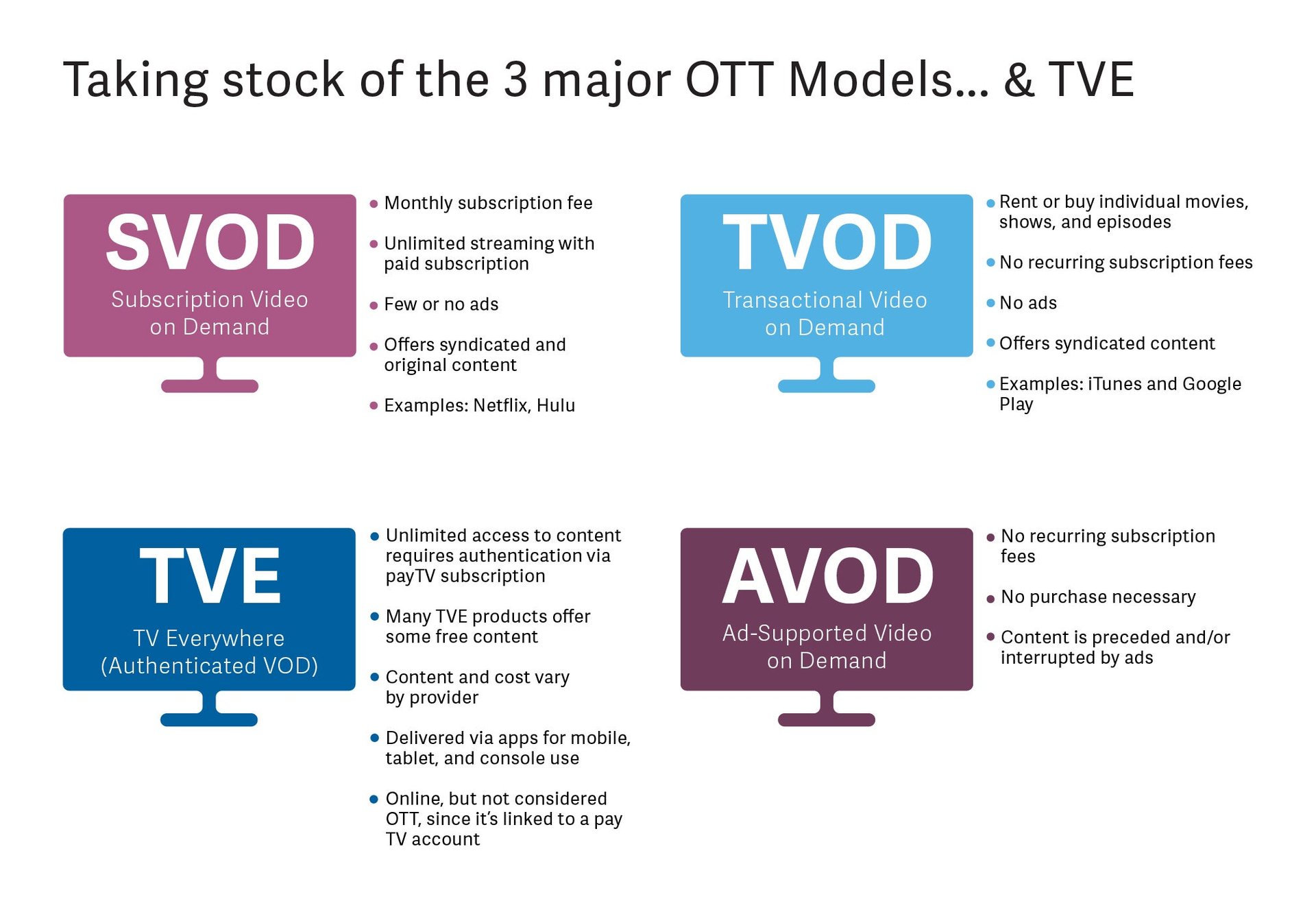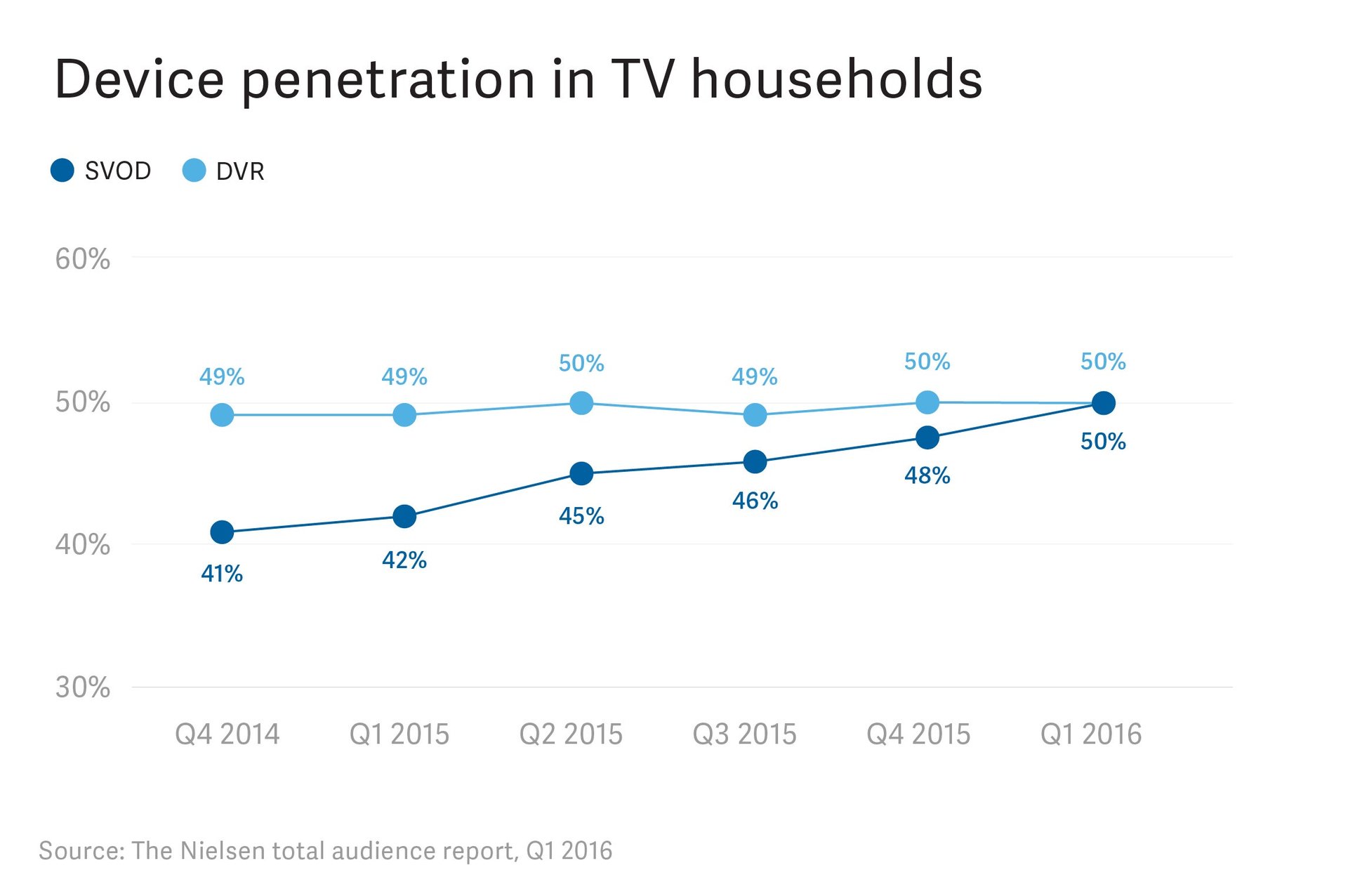Cord-never? Loyal cable subscriber? Either way, content creators want your attention
Would video streaming services exist without the proliferation of high-speed broadband and mobile devices that make video so easy to watch? Unlikely. There’s a long, rich history of technology enabling in-home entertainment, and it predates the internet by many years.


Would video streaming services exist without the proliferation of high-speed broadband and mobile devices that make video so easy to watch? Unlikely. There’s a long, rich history of technology enabling in-home entertainment, and it predates the internet by many years.
During World War II, production of television receivers and TV R&D was halted as national resources were diverted to the war effort. The post-war resumption of technological investment in these areas spurred innovation and increased consumer access that resulted in the first Golden Age of television, bringing us programs like Leave it to Beaver and The Twilight Zone. These creative breakthroughs were made possible by broadcasting technology that connected producers and networks to mass audiences.
By comparison, today’s entertainment landscape—which includes broadcast, cable and satellite TV, broadband-driven on-demand streaming video, apps, and TV-connected devices—is far more complex and diverse than it was when Father Knows Best first aired. As a result, pay TV and broadband providers are playing new roles, from creating content to curating and delivering it.
Digital content channels have beckoned the age of cord-cutters and cord-shavers: viewers who have shifted from live TV to online viewing. And now cord-nevers, people who have never paid for cable or satellite TV, are outpacing cord-cutters.
While there are currently three times as many cable/satellite subscribers as cordless consumers, the balance could shift as more and more people prefer to find entertainment online and as cord-nevers continue to be a faster-growing group than pay subscribers.

Inspired by this demand for on-the-go content, pay TV providers have developed new ways to serve existing subscribers, and, perhaps, to connect with the cordless. One example is the advent of TV Everywhere: apps that allow subscribers to watch live and recorded programming on their smartphones, tablets, and gaming consoles. According to a recent survey, 14.7 million households are active TV Everywhere (TVE) users (that’s approximately 13% of all North American pay TV households).
The reach of pay TV content is expected to increase with more awareness of TVE offerings and with the increase of replicate online streaming services like AT&T’s DIRECTV Now. Tech improvements, such as easier authentication, single sign-on, and better user experience, will also help build audiences.
Many providers are also experimenting with giving potential customers a “taste” of free content—for example, by making a limited amount of programming available without authentication, or by windowing availability, so anyone can watch, but authenticated viewers can watch first.
And while cord-cutters and cord-nevers don’t pay for a traditional television experience, they do pay for broadband. This has created a booming OTT (over-the-top) industry, which includes several models for content creation and delivery.

High-speed broadband providers have enabled the growth of OTT by ensuring that customers have access to streaming technology in their homes and in their pockets. In fact, by early 2016, SVOD programming had reached 50% of US households—the same percentage of households that have DVR players.

Not only has broadband technology given consumers new ways to watch content, it has enabled creators to change the way entertainment is made and distributed. People aren’t always tuning in at a fixed time each week to watch their favorite shows. They’re binge-watching, catching up on past episodes, checking out behind-the-scenes content on social media, and looking for previews online.
They’ve also come to expect hyper-personalized content, and thanks to advances in data technology, the future of viewing will be fully customized. Netflix estimates that its vaunted recommendation algorithm is worth $1 billion. Likewise, networks, mobile device manufacturers, and broadband and television providers are experimenting with hybrid content models, recognizing that there’s no longer a one-size-fits-all approach to entertainment.
Some AVOD pioneers like Fullscreen are now launching subscription services that offer exclusive videos from top users. Pay TV providers are developing ways to curate and package content, making it easier for people to find what they want, when they want it. And social platforms that support streaming video, like Snapchat, Instagram, and Facebook Live, aren’t just for user-generated content—networks and producers are using them to create brand-new forms of programming, and to rally audiences around universally appealing events, like major sports or cultural events.
For pay TV and broadband providers, it’s a time of change, bringing both challenges and unprecedented opportunity. And for consumers, it’s simply a great time to be watching.
Building a connected community requires the vision and commitment of businesses like AT&T, whose investments in both mobile and fixed broadband infrastructure have profound benefits for hundreds of cities and towns across the nation. For more information on AT&T’s groundbreaking technology and content projects, visit their
Innovation Blog
and
DIRECTV App page
.
This article was produced on behalf of AT&T by Quartz creative services and not by the Quartz editorial staff.